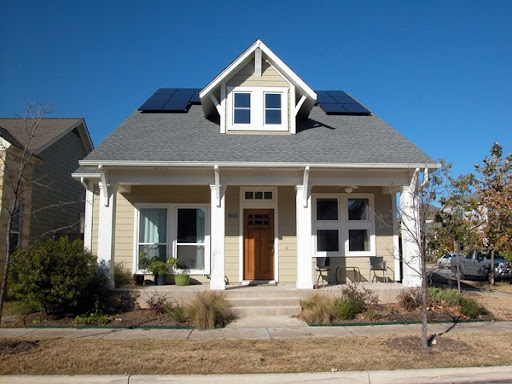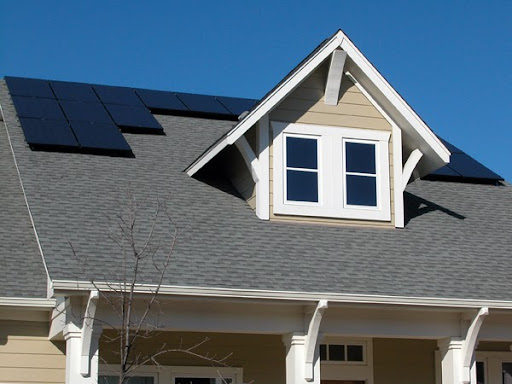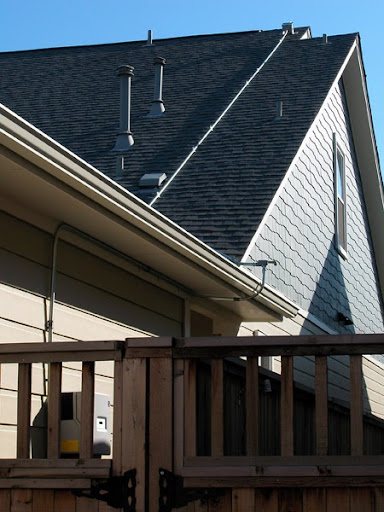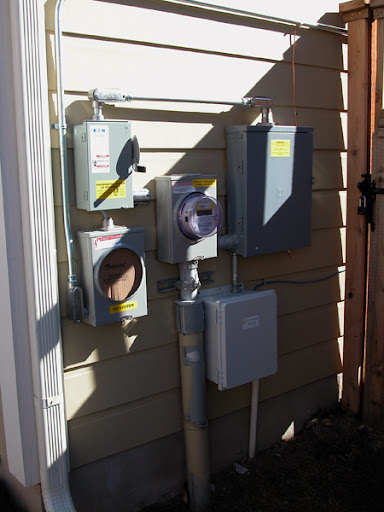
Thursday, January 28, 2010
Tuesday, January 19, 2010
On the Grid
Our solar array passed inspection on the first try last Wednesday, and today Austin Energy installed our solar photovoltaic meter and net meter, which replaced the traditional power meter. With net metering, our electric bill will reflect the difference between what our solar array produces and what we consume over a month's time. This is advantageous since power is sold to Austin Energy for less than what they charge for it. In temperate spring and fall months, we should see a credit.
Richard Perry, our project manager with SRE, dropped by on his way home to walk me through how to turn on the system... just in time for the sun to go down. Let's hope for a sunny day tomorrow so we can watch the meter run backwards!
Richard Perry, our project manager with SRE, dropped by on his way home to walk me through how to turn on the system... just in time for the sun to go down. Let's hope for a sunny day tomorrow so we can watch the meter run backwards!
Sunday, January 3, 2010
Solar Installation, Days 3-4
On Wednesday and Thursday, the final elements of our solar system were installed. The completed system was tested and briefly produced power before being taken offline until the Austin Energy inspection.
The solar array looks great! The installation is very tidy, especially after the ends of the rails were trimmed, and I like how the design frames the dormer.


The back of the house has a long conduit run from the panels to the inverter and meters at the alley. DC power cannot run through the building envelope per code, so our brilliant suggestion to run the conduit through the attic was not possible. Had we gone with microinverters - an inverter per panel - the AC power could've run through the attic.

The panels are wired in series as two strings of 10 panels. The wires come to a transition box, then extend through the conduit to the inverter. Next is the photovoltaic meter, the disconnect switch, the main service panel for the house, and finally the electric meter. During the brief test, we watched the meter run backwards! The other box you see contains equipment that will allow us to monitor our solar production once we're up and running.

The solar array looks great! The installation is very tidy, especially after the ends of the rails were trimmed, and I like how the design frames the dormer.


The back of the house has a long conduit run from the panels to the inverter and meters at the alley. DC power cannot run through the building envelope per code, so our brilliant suggestion to run the conduit through the attic was not possible. Had we gone with microinverters - an inverter per panel - the AC power could've run through the attic.

The panels are wired in series as two strings of 10 panels. The wires come to a transition box, then extend through the conduit to the inverter. Next is the photovoltaic meter, the disconnect switch, the main service panel for the house, and finally the electric meter. During the brief test, we watched the meter run backwards! The other box you see contains equipment that will allow us to monitor our solar production once we're up and running.

Subscribe to:
Posts (Atom)